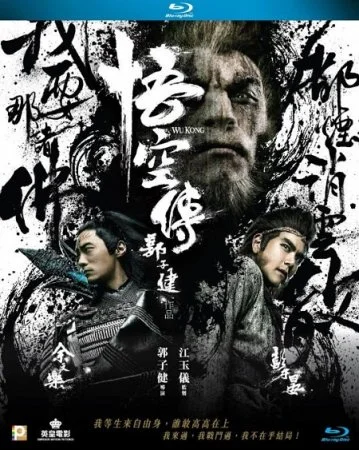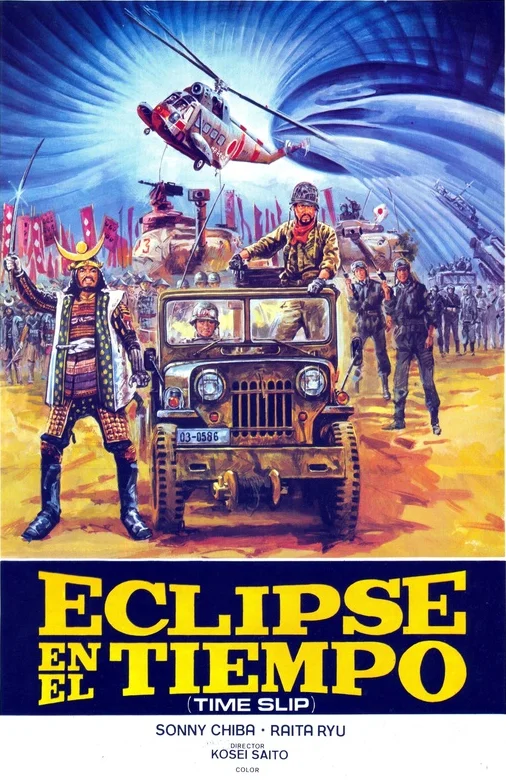Featured Movies
Seven Samurai 4K 1954 Ultra HD 2160p
Сountry: Japan
Genre: Drama
Cast: Toshirô Mifune, Takashi Shimura, Keiko Tsushima, Yukiko Shimazaki, Kamatari Fujiwara, Daisuke Katô, Isao Kimura, Minoru Chiaki, Seiji Miyaguchi, Yoshio Kosugi, Bokuzen Hidari, Yoshio Inaba, Yoshio Tsuchiya, Kokuten Kôdô, Eijirô Tôno, Kichijirô Ueda, Jun Tatara, Atsushi Watanabe
The film is set in 16th century Japan, torn by civil war and turmoil. Peasants, ravaged by robbers, hire seven samurai to protect their crops. One of them, conventionally the protagonist, as the real hero of the film is essentially a collective image of the people, only out of compassion for the peasants takes the job - as a fee was offered only food and a roof in the stable. He is joined by an experienced warrior and former comrade-in-arms who seized the opportunity to make a true friend. A young boy and a romantic becomes the third. An ascetic, renouncing everything but honing his art, becomes the fourth. The fifth, who chops wood for a cup of rice, agrees because of need. The sixth is himself a former peasant who has become a samurai. And the seventh, although a weak swordsman, has a cheerful character, which is so important for comrades in moments of danger. They unite the villagers in this war against the brigands, who are essentially the same unfortunate victims of the era.
User Review
16th century Japan. A small village inhabited only by peasants is being terrorised by robbers, taking away all their food, which could lead to starvation. Deciding that they need to start fighting back, the poor villagers send several to the city, where they must find samurai who will agree to protect them for rice and lodging. Soon, under the leadership of Kambay, a wise and noble samurai, the villagers manage to assemble a squad of seven samurai. These warriors differ from each other not only in character, but also in skills, but all of them decided for such a small fee to go to the defence of the poor ...
The painting ‘Seven Samurai’ occupies a special place in Kurosawa's work. Firstly, it is the most realistic of all the works of the Japanese master, who is, among other things, a descendant of the samurai clan, which means that he is fully aware of the traditions and customs of ancient warriors. Secondly, it is no secret that Kurosawa prepared for this project thoroughly - he wrote down all his thoughts about the film in a special notebook with drawings, and some say that he conceived this picture even before ‘Rasemon’ - the work that brought him fame outside Japan. Thirdly, Kurosawa was under intense pressure from the producers during filming, who even wanted to shut down the project, but in the end they made up for the cost. Fourthly, this creation was admired by such recognised masters of cinema as Andrei Tarkovsky, Steven Spielberg, Sergio Leone, who on the basis of ‘Seven Samurai’ filmed the well-known western ‘The Magnificent Seven’ - a remake of this picture, and George Lucas. The latter, the creator of the well-known ‘Star Wars’, created his epic thanks to Kurosawa's film. Fifth, many film critics even consider this work the best in the works of the Japanese master. In general, ‘Seven Samurai’, takes a special place in the history of cinema.
Kurosawa shot this picture with his almost permanent group, namely with his favourite actor Toshiro Mifune, cameraman Asakazu Nakai and of course composer Fumio Ritsuke. A collection of like-minded people, each of whom put the best of themselves into this creation.
We would like to pay special attention to Toshiro Mifune, who played in ‘Seven Samurai’ Kikuchio - a peasant who is trying his best to become a samurai. The actor was able to create an image of energetic, laughing in some places hero, who had a difficult fate. Especially vividly demonstrates his acting skills Mifune, and Kurosawa rigidity of the time, in the episode of the rescue of the child. When Mifune's character takes a baby in his arms and sobbingly says that this child is himself, that the exact same story happened to him, with a burning mill behind him. This is certainly one of the most powerful and powerfully emotionally charged scenes in the entire film.
The wonderfully constructed episodes, dominated by the artistic flair of Kurosawa, who once trained as a painter, and the wonderful play of shadows and compositions of cameraman Asakazu Nakai, unfold before the viewer quickly and mesmerisingly, revealing not only the world of ancient Japan, but also the characters' personalities.
The best episode is the finale, which reveals to the viewer the whole essence of the film. The 3 surviving samurai inspect the graves of their brothers in arms, while the ungrateful peasants are busy planting rice. The scene, wonderfully constructed from all points of view, carries the idea of the decline of the samurai era, whose representatives have gone without honour and gratitude, leaving the world to them - the ungrateful poor.
The most famous Japanese director surprisingly managed to collect dramatic episodes, brutal battles, comic moments, social theme in one whole, which, of course, can be considered the pinnacle of the director's craft. And even if pictures are now shot more spectacularly with the use of special effects, the film ‘Seven Samurai’ remains an example of a powerfully made epic drama, which is timeless and will surely touch the heart of today's viewers.
Resolution: Native 4K (2160p)
HDR: Dolby Vision, HDR10
Aspect ratio: 1.37:1
Original aspect ratio: 1.37:1
#Japanese: FLAC 1.0 (Filtered)
User Review
16th century Japan. A small village inhabited only by peasants is being terrorised by robbers, taking away all their food, which could lead to starvation. Deciding that they need to start fighting back, the poor villagers send several to the city, where they must find samurai who will agree to protect them for rice and lodging. Soon, under the leadership of Kambay, a wise and noble samurai, the villagers manage to assemble a squad of seven samurai. These warriors differ from each other not only in character, but also in skills, but all of them decided for such a small fee to go to the defence of the poor ...
The painting ‘Seven Samurai’ occupies a special place in Kurosawa's work. Firstly, it is the most realistic of all the works of the Japanese master, who is, among other things, a descendant of the samurai clan, which means that he is fully aware of the traditions and customs of ancient warriors. Secondly, it is no secret that Kurosawa prepared for this project thoroughly - he wrote down all his thoughts about the film in a special notebook with drawings, and some say that he conceived this picture even before ‘Rasemon’ - the work that brought him fame outside Japan. Thirdly, Kurosawa was under intense pressure from the producers during filming, who even wanted to shut down the project, but in the end they made up for the cost. Fourthly, this creation was admired by such recognised masters of cinema as Andrei Tarkovsky, Steven Spielberg, Sergio Leone, who on the basis of ‘Seven Samurai’ filmed the well-known western ‘The Magnificent Seven’ - a remake of this picture, and George Lucas. The latter, the creator of the well-known ‘Star Wars’, created his epic thanks to Kurosawa's film. Fifth, many film critics even consider this work the best in the works of the Japanese master. In general, ‘Seven Samurai’, takes a special place in the history of cinema.
Kurosawa shot this picture with his almost permanent group, namely with his favourite actor Toshiro Mifune, cameraman Asakazu Nakai and of course composer Fumio Ritsuke. A collection of like-minded people, each of whom put the best of themselves into this creation.
We would like to pay special attention to Toshiro Mifune, who played in ‘Seven Samurai’ Kikuchio - a peasant who is trying his best to become a samurai. The actor was able to create an image of energetic, laughing in some places hero, who had a difficult fate. Especially vividly demonstrates his acting skills Mifune, and Kurosawa rigidity of the time, in the episode of the rescue of the child. When Mifune's character takes a baby in his arms and sobbingly says that this child is himself, that the exact same story happened to him, with a burning mill behind him. This is certainly one of the most powerful and powerfully emotionally charged scenes in the entire film.
The wonderfully constructed episodes, dominated by the artistic flair of Kurosawa, who once trained as a painter, and the wonderful play of shadows and compositions of cameraman Asakazu Nakai, unfold before the viewer quickly and mesmerisingly, revealing not only the world of ancient Japan, but also the characters' personalities.
The best episode is the finale, which reveals to the viewer the whole essence of the film. The 3 surviving samurai inspect the graves of their brothers in arms, while the ungrateful peasants are busy planting rice. The scene, wonderfully constructed from all points of view, carries the idea of the decline of the samurai era, whose representatives have gone without honour and gratitude, leaving the world to them - the ungrateful poor.
The most famous Japanese director surprisingly managed to collect dramatic episodes, brutal battles, comic moments, social theme in one whole, which, of course, can be considered the pinnacle of the director's craft. And even if pictures are now shot more spectacularly with the use of special effects, the film ‘Seven Samurai’ remains an example of a powerfully made epic drama, which is timeless and will surely touch the heart of today's viewers.
Info Video
Codec: HEVC / H.265 (59.5 Mb/s)Resolution: Native 4K (2160p)
HDR: Dolby Vision, HDR10
Aspect ratio: 1.37:1
Original aspect ratio: 1.37:1
Info Audio
#Japanese: FLAC 1.0 (Unfiltered)#Japanese: FLAC 1.0 (Filtered)
Info Subtitles
English, Chinese (Traditional), Danish, Finnish, French, German, Italian, Japanese, Norwegian, Spanish (Castilian), Swedish.File size: 86.89 GB

You have purchased premium on MoonDL or TakeFile. You will automatically be activated an additional 512 GB of traffic every 48 hours or up to 128 GB every 48 hours (Premium Moon).
Watch trailer of the movie Seven Samurai 4K 1954 Ultra HD 2160p
Maybe You like:
Add comments























 Like
Like Don't Like
Don't Like



